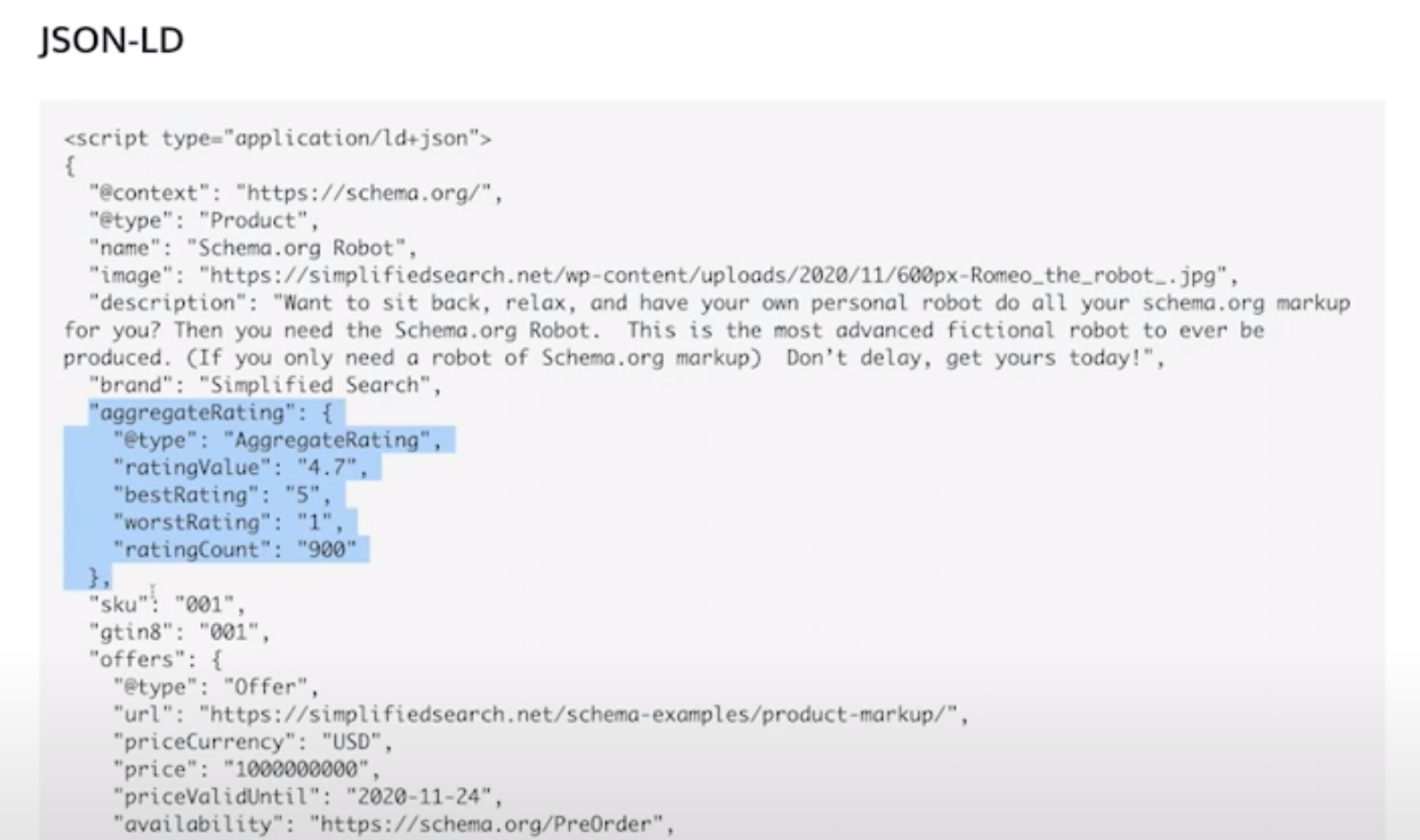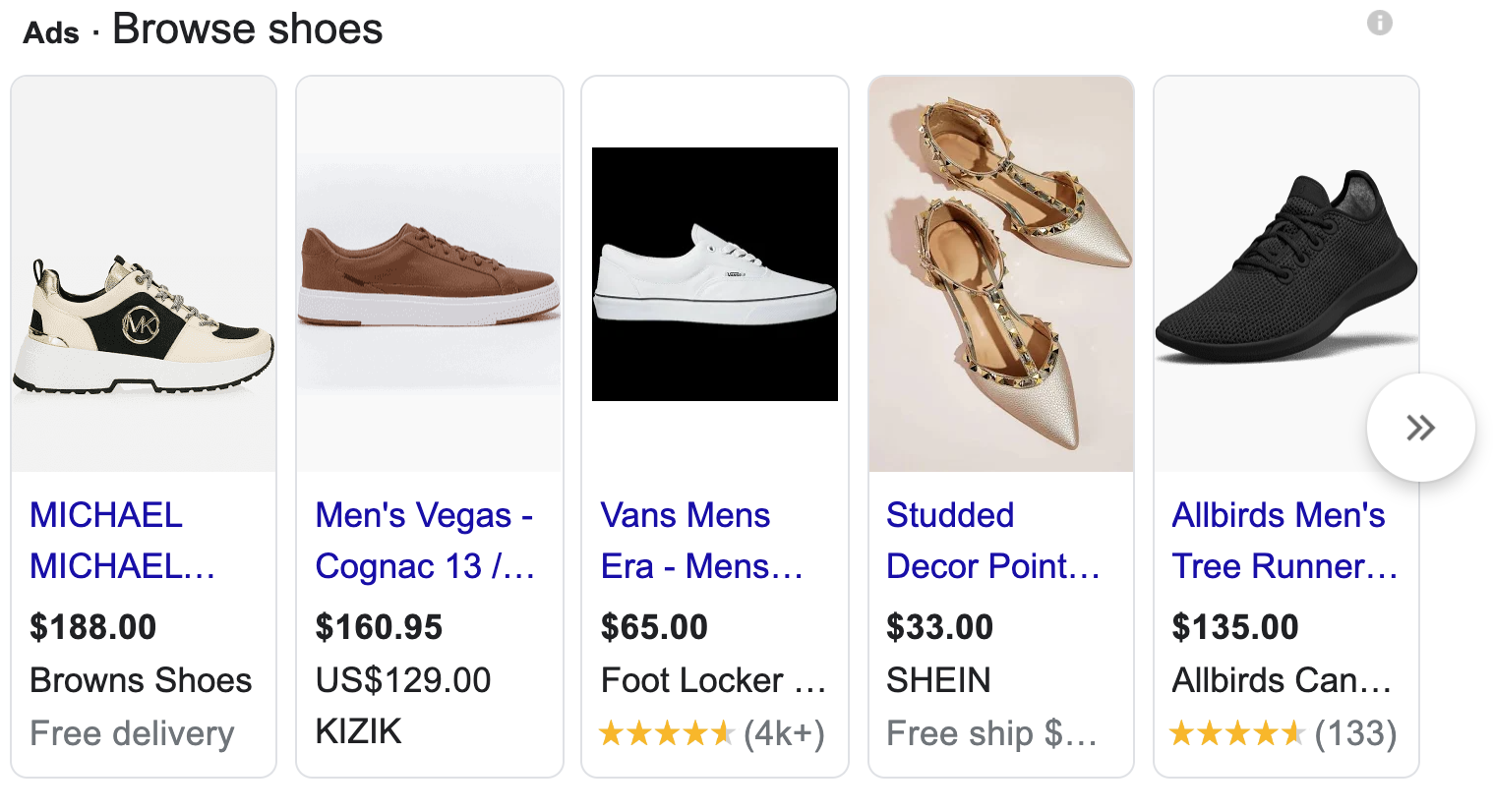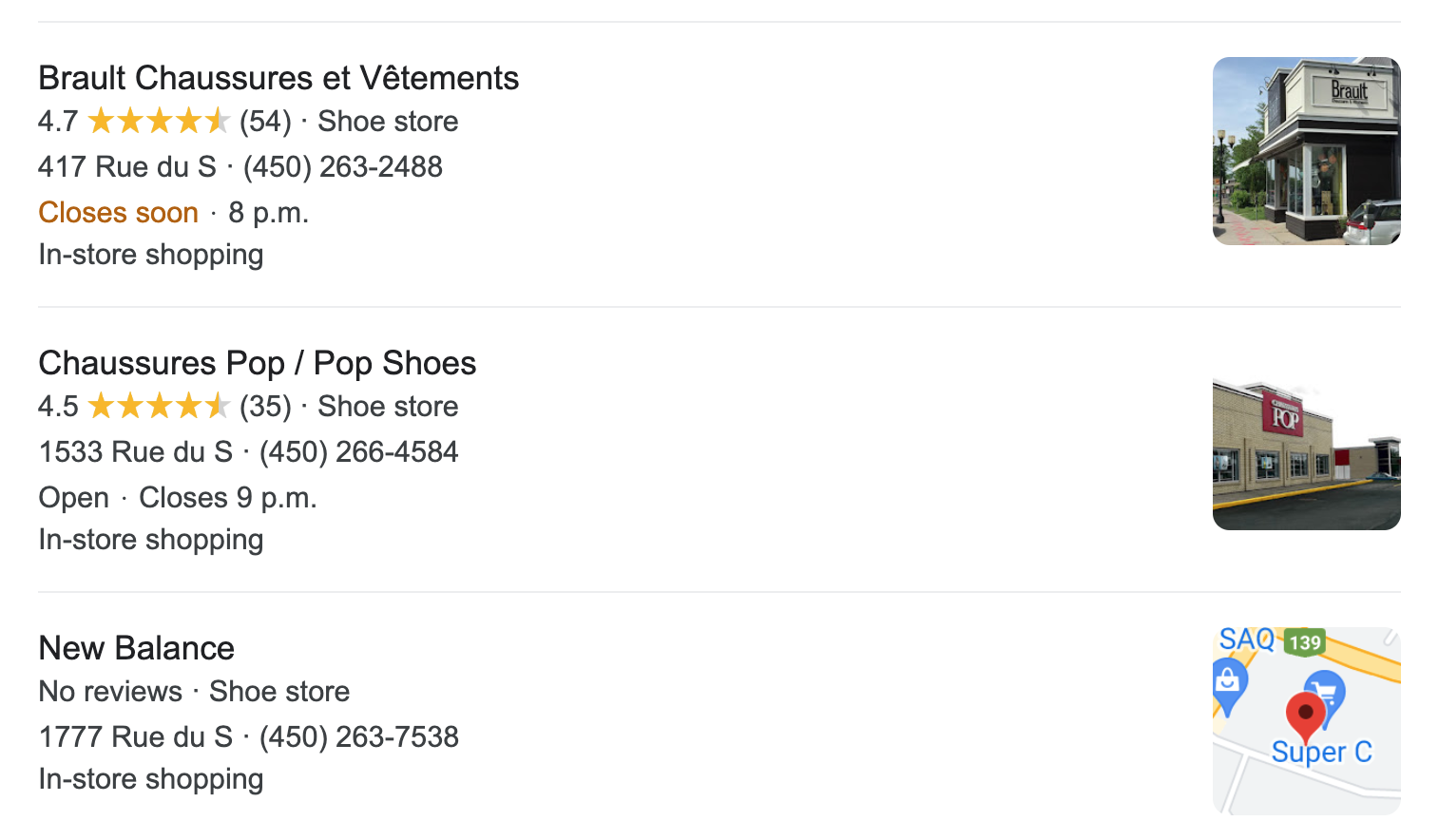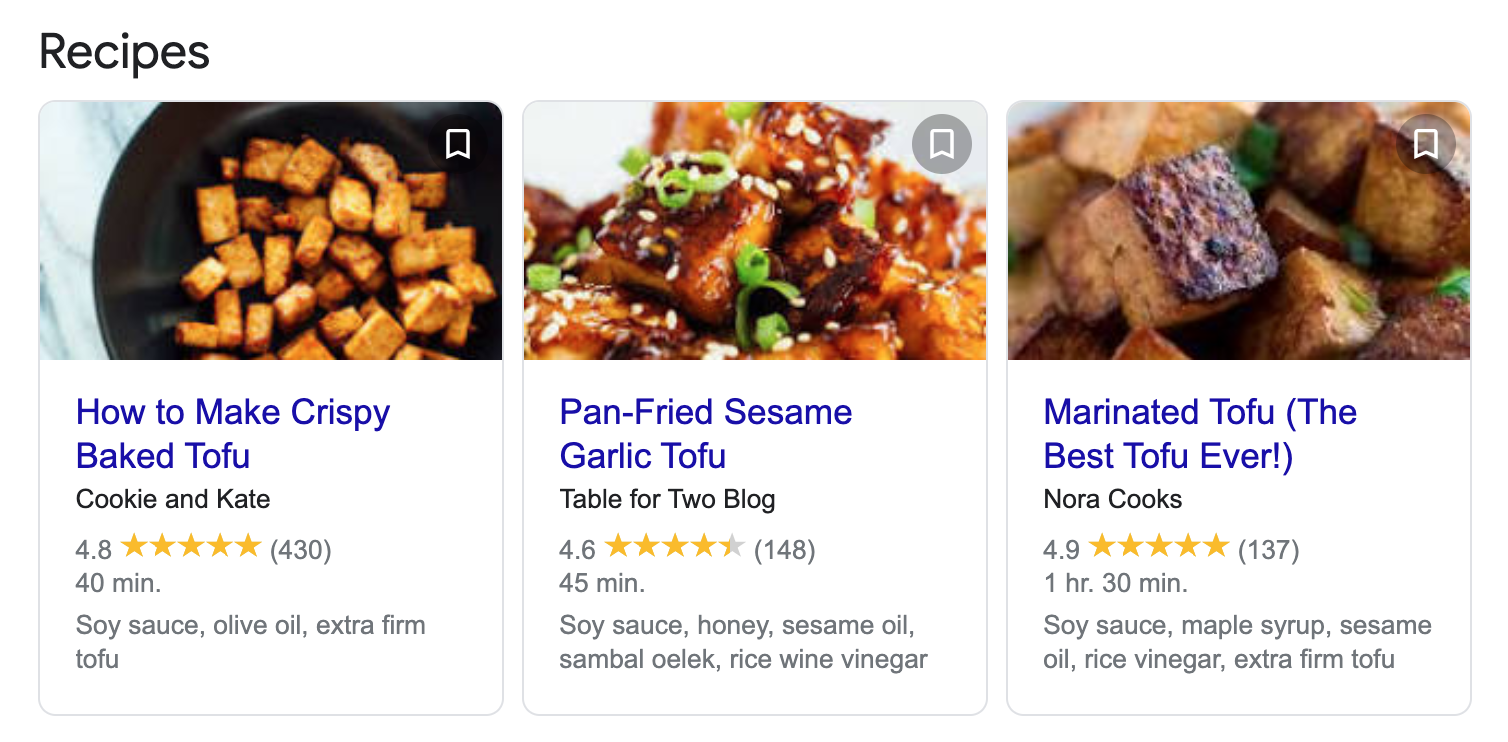Why Do Star Reviews Show Up Under Some Providers but Not Others Organically
The elusive five-star review used to exist something you could only flaunt in a rotating reviews section on your website.
Only today, Google has pulled these stars out of the shadows and features them front and center across branded SERPs and beyond.
Consider that 48% of consumers won't even look twice at a business organization with less than 4-stars.
Star ratings tin help businesses earn trust from potential customers, amend local search rankings, and boost conversions.
This is your guide to how they piece of work.
Stars and SERPs
Star ratings on Google are powered by consumer reviews from dissimilar properties, and Google uses an algorithm and an average to decide how many stars are displayed.
These ratings announced on a scale of 1 to five stars.
When a person searches Google, they volition come up across star ratings on standard blueish link listings, ads, rich results similar recipe cards, local pack results, third-political party review sites, and on app shop results.
John Mueller recently confirmed that Google does non factor star ratings or customer reviews into web search rankings. However, Google is articulate that star ratings influence local search results and rankings:
"Google review count and review score factor into local search ranking. More reviews and positive ratings tin improve your business concern' local ranking."
Even though they are not a ranking factor for organic search, star ratings tin serve as an of import conversion chemical element, helping you brandish social proof and build brownie.
Here's what the different types of star-rating results look similar in Google, and how they work on each listing type.
Standard "Blue Link" Listings and Google Stars
 Screenshot from SERPs, Google, Baronial 2021
Screenshot from SERPs, Google, Baronial 2021
Websites can stand out from their competitors by getting stars to show upwards around their organic search results listing pages.
Information technology was only recently that Google started testing star ratings in organic search.
How to Get Google Stars on Organic SERPs
If you want stars to prove up on your organic search results, add schema markup to your website.
Learn how to do that in the video below:
Equally the video points out, y'all need bodily reviews to go your structured information markup to prove.
So you can work with your development team to input the lawmaking on your site that indicates your average rating, highest, lowest, and total rating count.
 Screenshot JSON-LD script on Google Developers, August 2021
Screenshot JSON-LD script on Google Developers, August 2021
In one case you add together the rich snippet to your site at that place is no articulate timeline for when they will start appearing in the SERPs, that's up to Google.
When you're done, you can check your work with Google'south Structured Information Testing Tool.
Adding schema is strongly encouraged. But even without it, if you own a retail store and have ratings, Google may still evidence your star ratings in the search engine results.
They practice this to ensure searchers are getting access to a variety of results. Google says:
"If yous take structured data markup on your website, your products will automatically show in complimentary listings (with the exception of the Shopping tab) without directly participating in the feature."
If yous want star ratings to show upward on Shopping Ads, you'll have to pay for that.
Paid Ads and Google Stars
 Screenshot from SERPs ads, Google, August 2021
Screenshot from SERPs ads, Google, August 2021
 Screenshot from SERPs ads, Google, July 2021
Screenshot from SERPs ads, Google, July 2021
When Google Stars appear in paid search ads they're known as seller ratings, "an automated extension type that showcases advertisers with high ratings."
These can appear in text ads, shopping ads (as seen above), and free listings. Both the star rating and the total number of votes or reviews are displayed.
How to Go Google Stars on Paid Ads
To participate in free listings, sellers have to do ii things:
- Follow all the required policies effectually personally identifiable information, spam, malware, legal requirements, and more.
- Submit a feed through Google merchant eye, or have structured data markup on their website (every bit described in the previous department).
And once more, some ecommerce sellers who do not haveschema markup may still take their content evidence up in the SERPs.
For text ads and shopping ads to prove star ratings, sellers are typically required to have at to the lowest degree 100 reviews in the last twelve months.
Google treats reviews on a per-country basis, then the minimum review threshold of 100 likewise applies but to ane region at a time.
For star ratings to appear on a Canadian ecommerce company's ads, for example, they would have to have obtained a minimum of 100 reviews from within Canada in the last twelvemonth.
Google considers reviews from their own Google Customer Reviews, and likewise from approved third-party partner review sites, which makes information technology easier for sellers to meet the minimum review threshold each year. Google also requests:
- The domain that has ratings must be the same as the i that's visible in the ad.
- A inquiry evaluation of your site must be conducted by Google or its partners.
- The reviews included must be about the product or service being sold.
Finally, Google provides a (really confusing) requirement stating that:
"Additionally, both of the following criteria must exist met: Average, blended, rating of three.5 or more stars for Text Ads. Currently, Google can show seller ratings if the boilerplate rating is less than three.five stars."
Basically, paid advertisers must meet a minimum number of stars for seller ratings to even appear on their ads.
This helps higher-quality advertisers stand out from the competition.
Local Pack Results and Google Stars
 Screenshot from SERPs local pack, Google, Baronial 2021
Screenshot from SERPs local pack, Google, Baronial 2021
Local businesses have a handful of options for their business to appear on Google via Google Maps, a Google My Business organisation page, and more than – all of which can evidence star ratings.
Google may aggregate reviews from other local review sites on your local concern properties with Google.
It can accept up to two weeks to get new reviews to show in your overall score.
How to Go Google Stars on Local Search Results
Customers have to leave reviews directly on your local business concern properties, and other local review websites.
Google encourages business organization owners to solicit reviews from their customers, including best practices like:
- Request your customers to leave you a review and making it easy for them to practice so by providing a link to your review pages.
- Making review prompts desktop and mobile-friendly.
- Replying to customer reviews (make sure you're a verified provider on Google beginning).
- Existence sure you do non offer incentives for reviews.
Once customers are actively leaving reviews, Google My Business contour owners accept a number of options to help them manage these:
 Screenshot from GMB Assist, Google, August 2021
Screenshot from GMB Assist, Google, August 2021
Rich Results, Like Recipes, and Google Stars
 Screenshot from search for [tofu recipe], Google, August 2021
Screenshot from search for [tofu recipe], Google, August 2021
Everybody's gotta eat, and nosotros celebrate nutrient in many ways — one of which is recipe blogs.
While restaurants rely more on local reviews, organic search results and even paid ads, food bloggers seek to have their recipes rated.
Like to other types of reviews, recipe cards in search results prove the average review rating and the total number of reviews.
The outcome has become a point of contention amid the food blogging community, since just three recipes per search can be seen on Google desktop results (like shown in the epitome in a higher place), and four on mobile.
These coveted spots will concenter 75% of the clicks, leaving anyone who hasn't mastered online client reviews in the dust.
That means that the quality of the recipe isn't necessarily driving these results.
How to Get Google Stars on Recipe Results
Like the steps to have stars appear on organic blue-link listings, nutrient bloggers and recipe websites need to add schema to their website in order for star ratings to show.
Nonetheless, it's not equally straightforward as listing the average and the total number of ratings. Developers should follow Google's instructions for recipe markup. In that location is both required and recommended markup:
Required Markup for Recipes
- Name of the recipe.
- Image of the recipe.
Recommended Markup for Recipes
- Aggregate rating.
- Author.
- Melt time, preparation time, and total duration.
- Engagement published.
- Clarification.
- Keywords.
- Nutrition data.
- Recipe category past meal type, similar "dinner"
- Region associated with the recipe.
- Ingredients.
- Instructions.
- Yield or full serving.
- Video (and other related markup, if there is a video in the recipe).
The markup for recipe instructions would look something like this, for case:
"recipeInstructions": [ { "@type": "HowToStep", "name": "Preheat", "text": "Heat oven to 425°F.", "url": "https://example.com/recipe#step1", "image": "https://example.com/photos/recipe/step1.jpg" }, Third-Party Review Sites and Google Stars
 Screenshot from SERPs listing of a review site, Google, Baronial 2021
Screenshot from SERPs listing of a review site, Google, Baronial 2021
Many software companies rely on third-party review sites to help inform their customer's purchasing decisions.
Tertiary-party review sites include whatsoever website that a brand doesn't own where a client can submit a review such as Yelp, G2, and many more.
Many of these sites, similar Capterra shown to a higher place, can display star ratings.
How to Get Google Stars on Third Party Review Sites
The best fashion to become a review on a third-party review site depends on which site is best for the make or the business.
For example, if y'all have active customers on Yelp, you may choose to engage with customers there.
 Screenshot from SERPs list of a review site, Google, Baronial 2021
Screenshot from SERPs list of a review site, Google, Baronial 2021
Similarly, if a software review site like Trust Pilot shows up for your branded search, you could do an email campaign with your client list asking them to leave you a review there.
Here are a few of the third-party review websites that Google recognizes:
- Trust Pilot.
- Reevoo.
- Bizrate – through Shopzilla.
When information technology comes to third-party reviews, Google reminds businesses that in that location is no way to opt out of tertiary-political party reviews, and they demand to take up whatsoever bug with third-party site owners.
App Store Results and Google Stars
 Screenshot from SERP app shop results, Google, August 2021
Screenshot from SERP app shop results, Google, August 2021
When businesses accept an awarding as their core production, they typically rely on App Store and Google Play Shop downloads.
Right from the SERPs, searchers tin can see an app's star ratings, as well as the total votes and other important data similar whether the app is free or not.
How to Become Google Stars on App Store Results
Businesses tin listing their iOS apps in the App Store, prompt customers to leave reviews there, and too reply to them.
They can do the same on the Google Play shop; instructions to practise so are here.
Shoot for the Stars
Stars point quality to consumers, and so they almost ever improve click-through rates wherever they are present.
Consumers tend to trust and buy from brands that have college star ratings in local listings, paid ads, or even app downloads.
Many, many, many studies accept demonstrated this miracle fourth dimension and again. So don't agree dorsum when it comes to reviews.
Practise an audit of where your brand shows up in SERPs and get stars next to as many placements every bit possible.
The most of import role of star ratings across Google, all the same, volition always be the service and experiences companies provide that fuel good reviews from happy customers.
More than Resources:
- How to Optimize for Rich Snippets: A Complete Guide
- Google Product Reviews Update Goes Live in Search Results
- Your Guide to Google E-A-T & SEO
Prototype Credits
Feature Prototype: BlueberryPie/Shutterstock
All Screenshots Taken by Writer
Source: https://www.searchenginejournal.com/google-star-ratings-guide/416951/
0 Response to "Why Do Star Reviews Show Up Under Some Providers but Not Others Organically"
Post a Comment